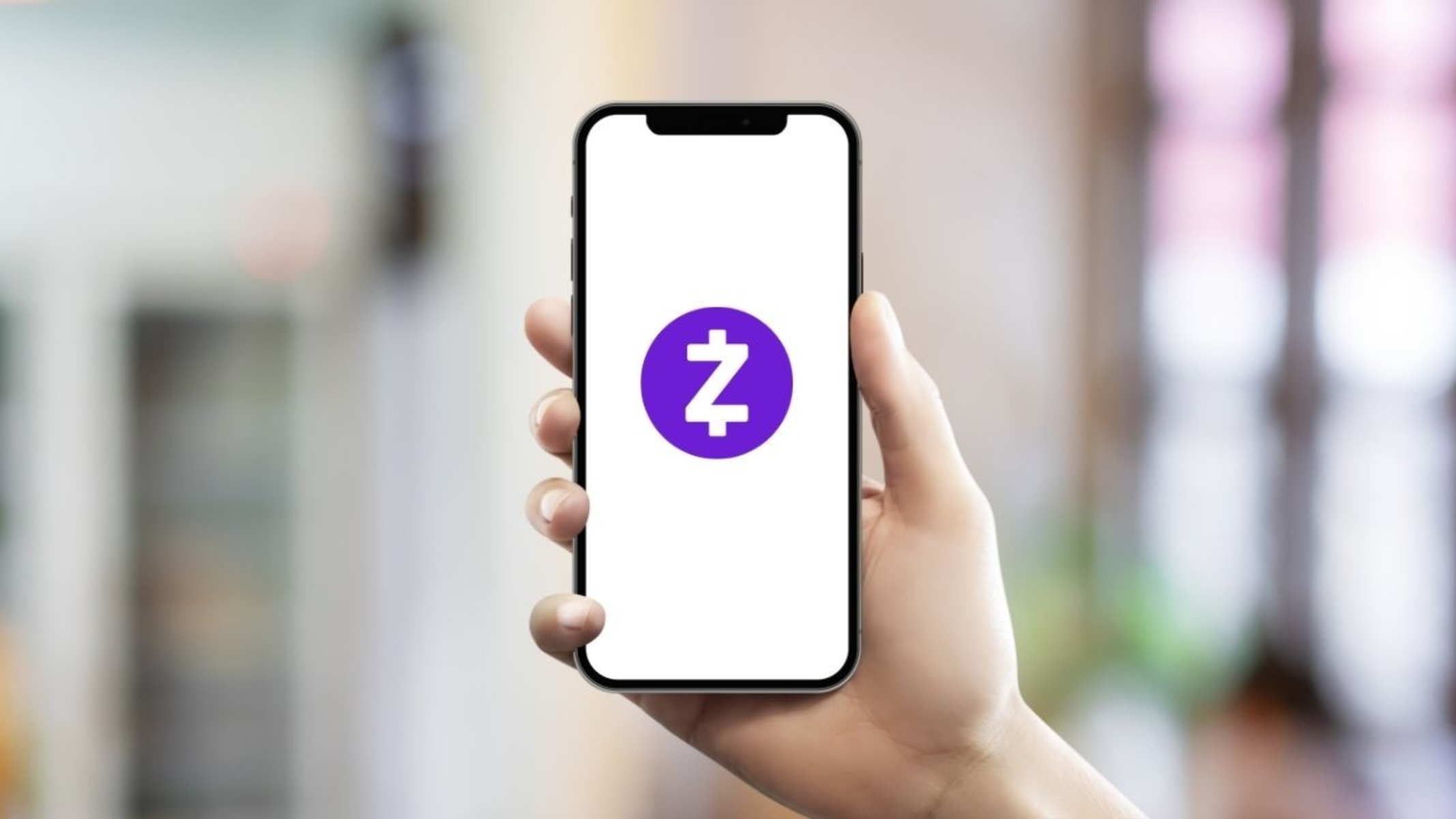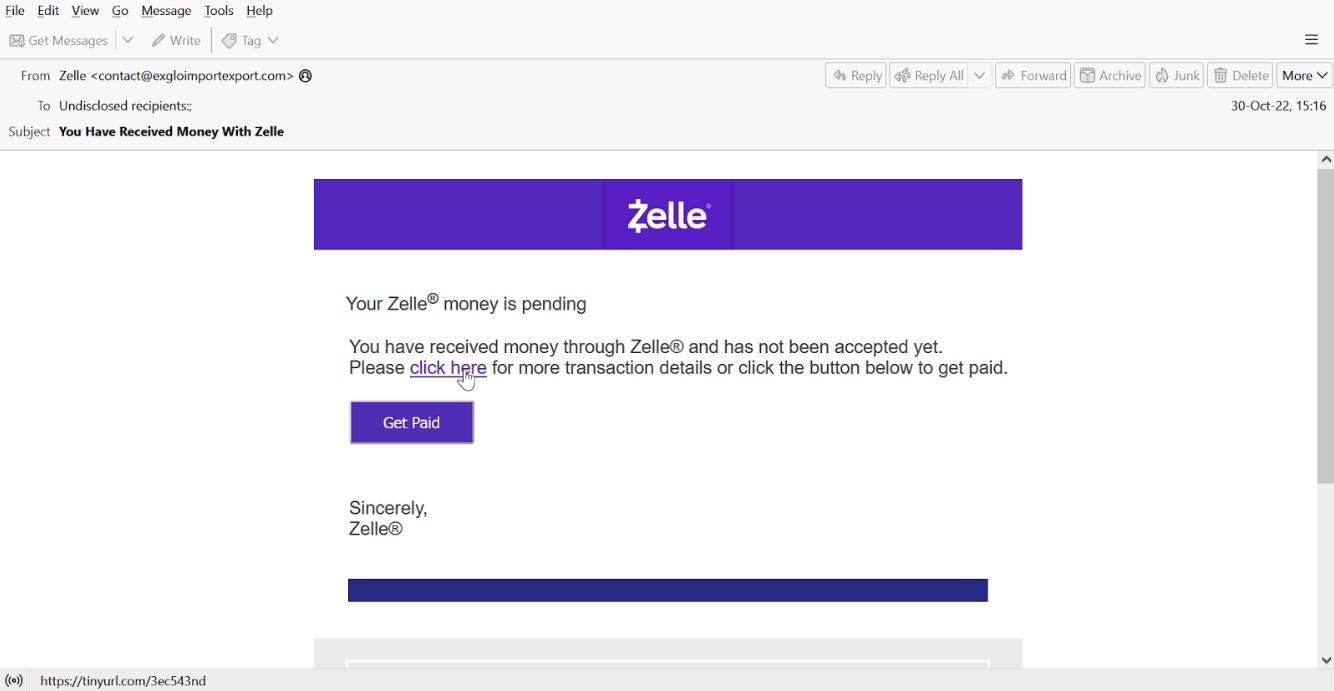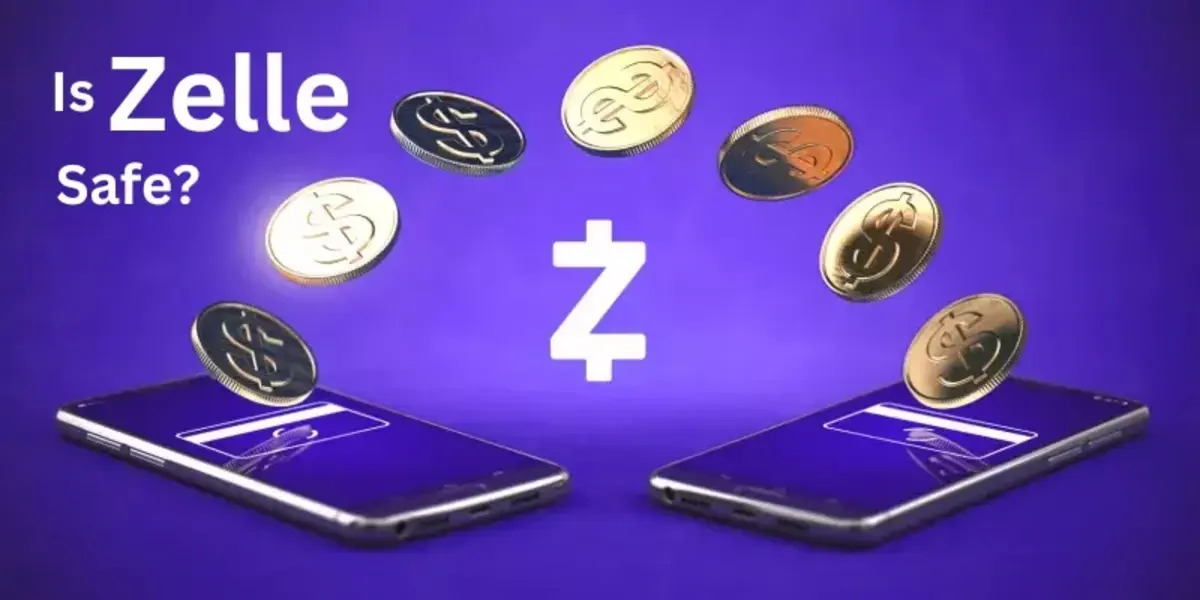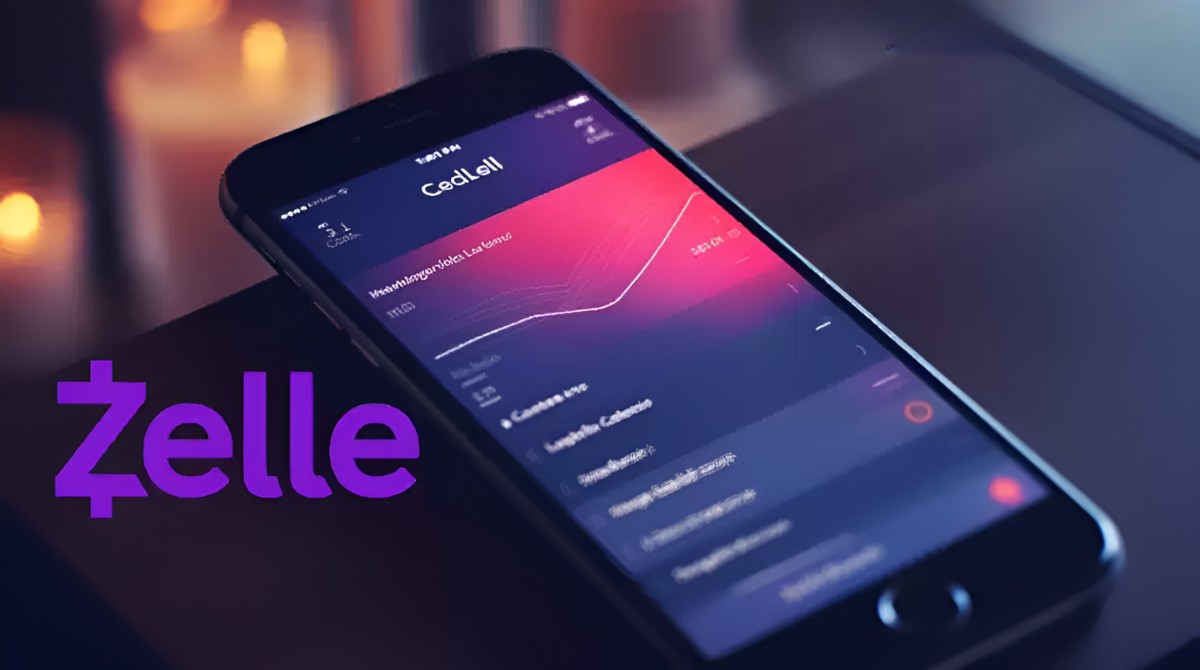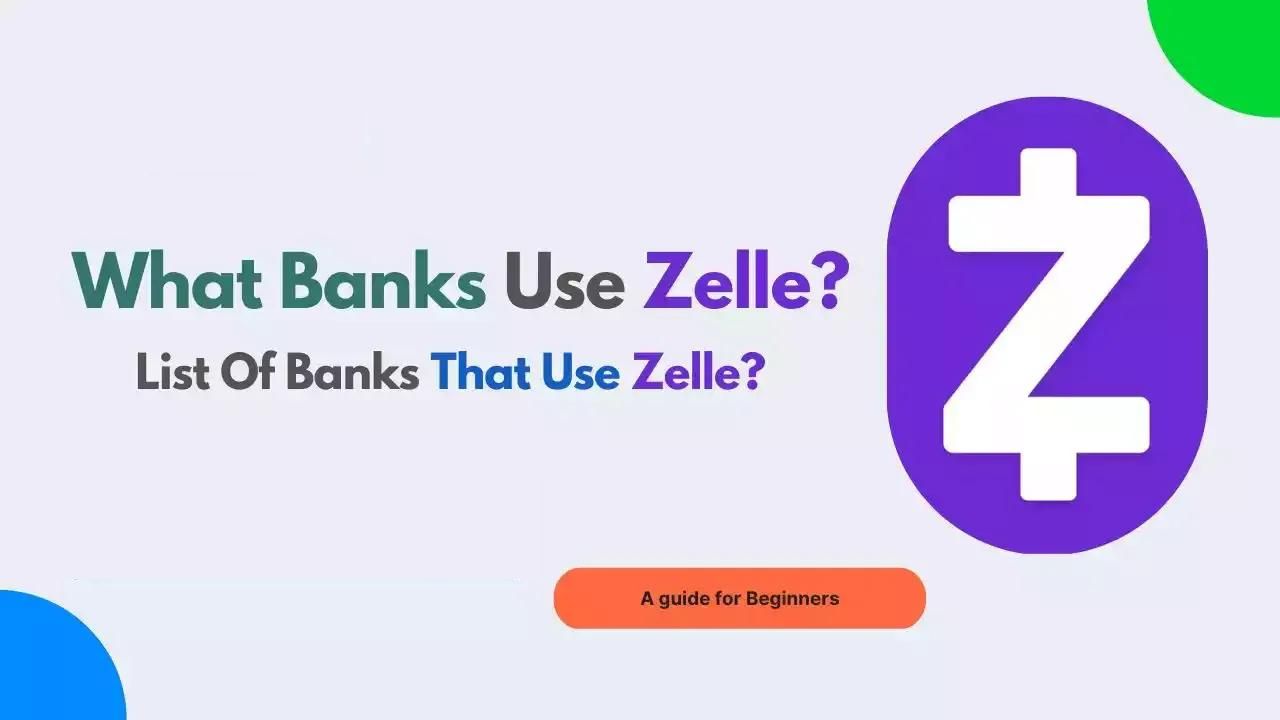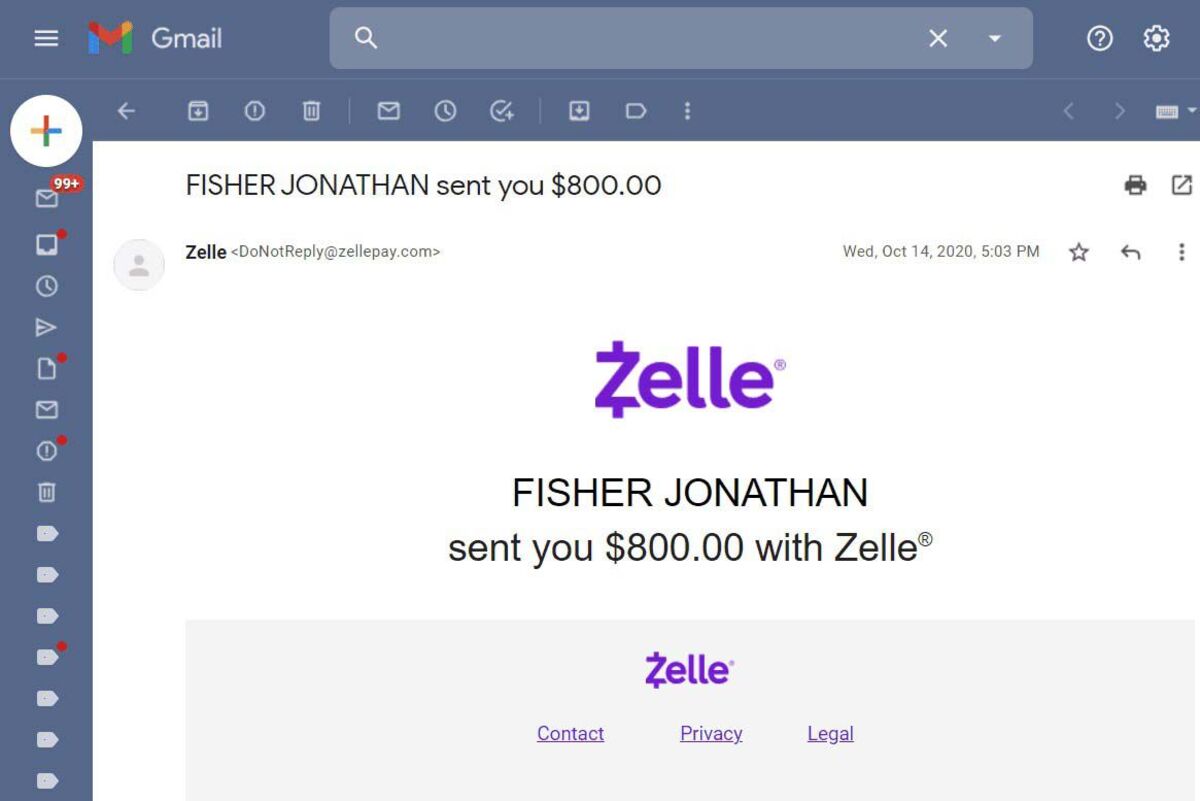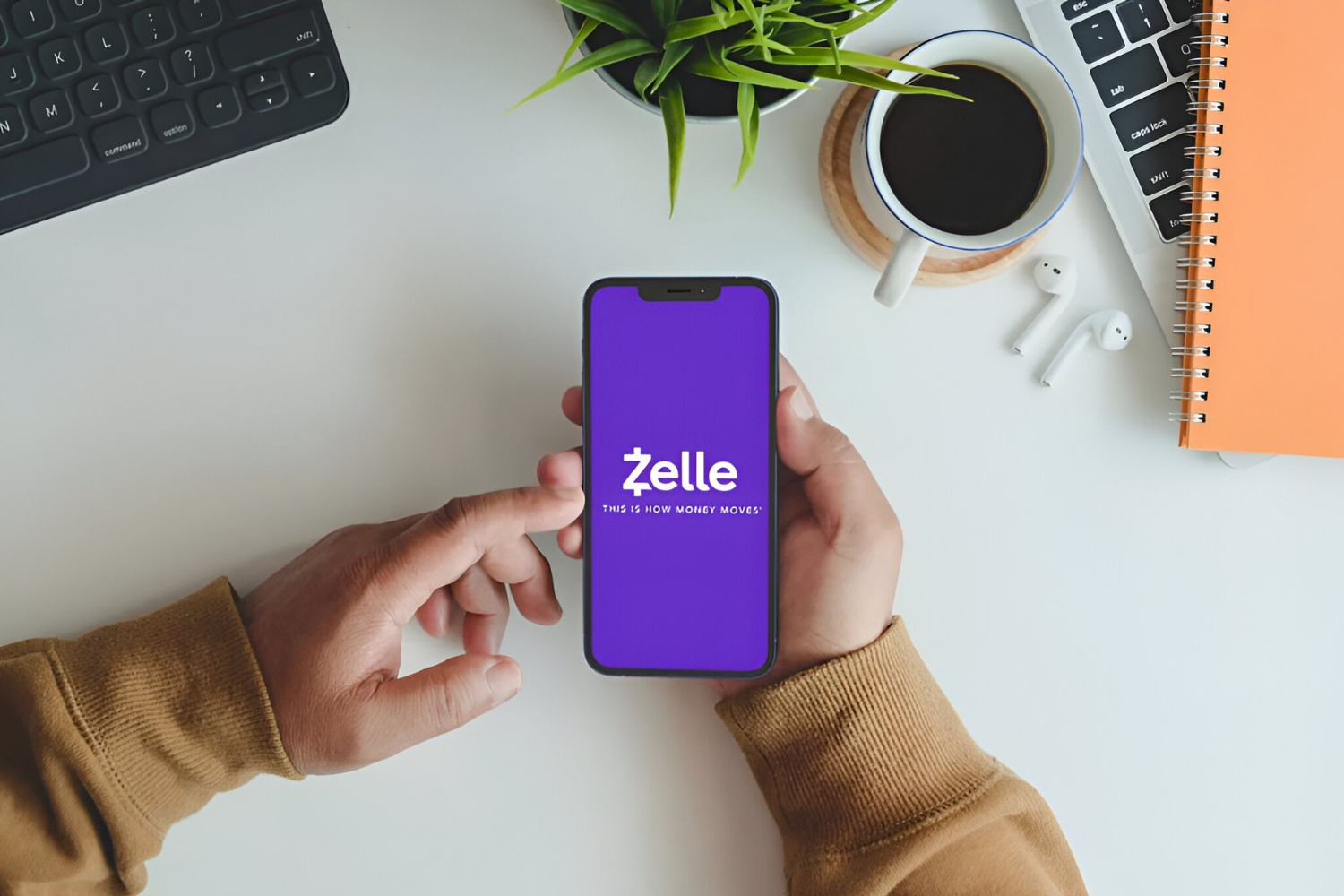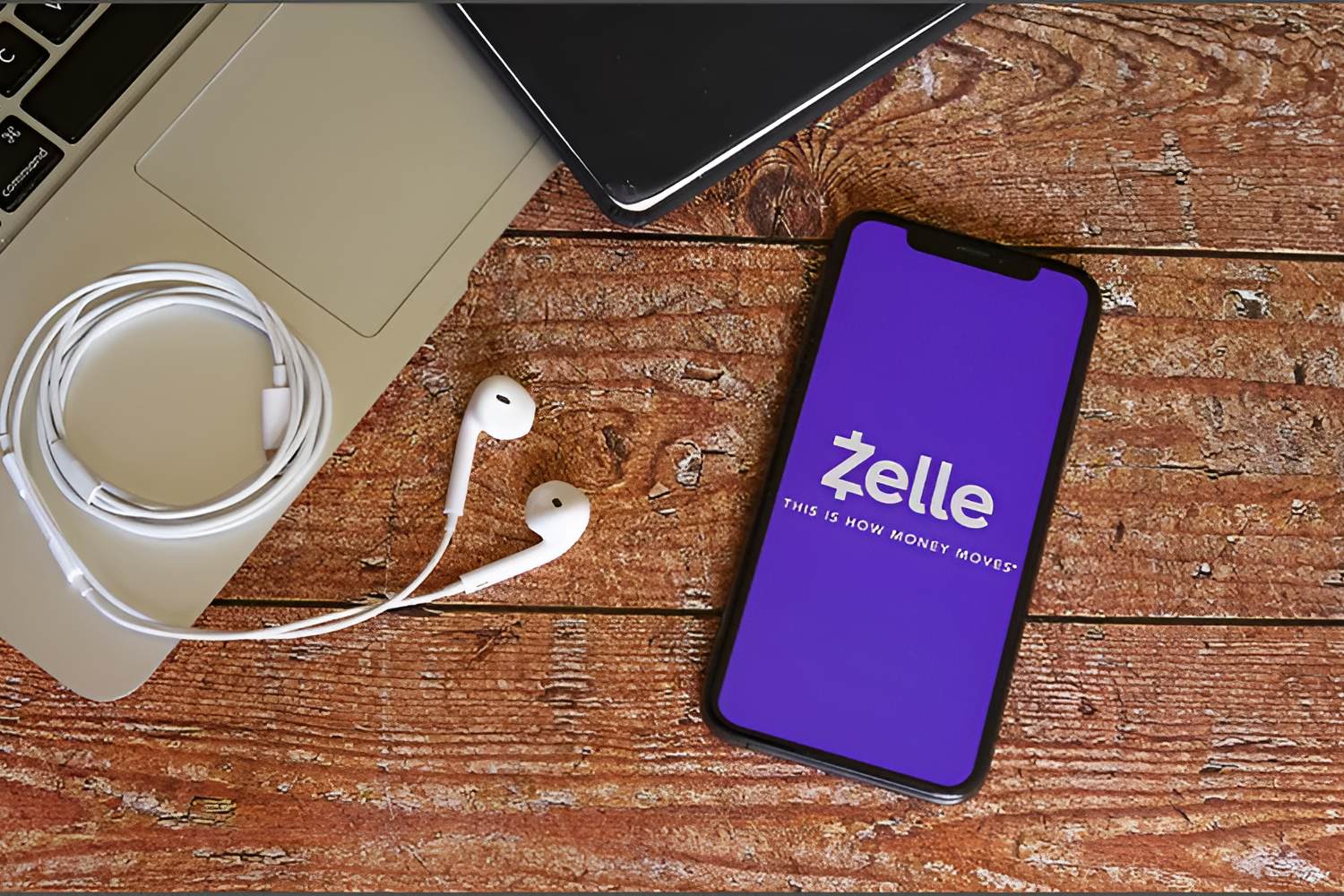What is Zelle?
Zelle is a convenient and secure digital money transfer service that allows users to send and receive money directly from their bank account. It offers a fast and easy way to transfer funds between individuals, eliminating the need for cash or checks.
Unlike traditional payment apps, Zelle is not a standalone platform. It is integrated into the mobile banking apps of participating banks and credit unions, making it accessible to millions of users across the United States.
With Zelle, users can send money to family, friends, or anyone else with a bank account in the United States. The funds are transferred directly from the sender’s bank account to the recipient’s bank account, typically within minutes.
Zelle is becoming increasingly popular due to its speed, convenience, and wide adoption among major financial institutions. It offers a real-time payment experience, allowing users to instantly send money for various purposes, such as splitting bills, paying rent, or reimbursing friends.
One of the key advantages of Zelle is that it simplifies the money transfer process. Users do not need to share bank account numbers or other sensitive information with each other. Instead, they can simply send money using the recipient’s email address or mobile phone number.
It is important to note that to use Zelle, both the sender and recipient must have bank accounts with participating financial institutions. Additionally, the service is currently only available for domestic transfers, and international transfers are not supported.
Overall, Zelle provides a secure and efficient way to transfer money, making it a popular choice for individuals looking for a hassle-free payment solution. Whether you need to split the bill at dinner, reimburse a friend, or send money to a family member, Zelle offers a convenient and reliable option.
How Does Zelle Work?
Zelle works by utilizing the existing banking infrastructure to facilitate fast and secure money transfers between users. Here’s a step-by-step breakdown of how Zelle works:
- Enrollment: To use Zelle, you need to have a bank account with a participating financial institution. Many major banks and credit unions in the United States offer Zelle as a service, so you may already have access to it through your existing banking app.
- Verification: Once you have access to Zelle, you need to link your bank account to the service. This involves providing your bank account details and verifying your identity to ensure the security of your transactions.
- Contact Setup: Before you can send money using Zelle, you’ll need to add the recipients to your contact list. This is typically done by entering the recipient’s email address or mobile phone number. Zelle will verify if the recipient is also registered with the service.
- Sending Money: To send money, simply select the recipient from your contact list, enter the amount you want to transfer, and confirm the transaction. The funds will then be deducted from your bank account and immediately transferred to the recipient’s bank account.
- Receiving Money: If someone sends you money through Zelle, you will receive a notification via email or text message, depending on how the sender initiated the transfer. You can then accept the payment and the funds will be deposited directly into your bank account.
- Transaction History: Zelle keeps a record of all your transactions, allowing you to easily track your payment history. This can be useful for keeping track of payments, splitting expenses, or managing personal finances.
It’s important to note that Zelle transfers are typically processed within minutes. However, in some cases, it may take longer depending on factors such as the recipient’s bank, network connectivity, or other unforeseen circumstances.
Zelle offers a seamless and user-friendly experience, making it a popular choice for individuals looking for a convenient way to transfer money. Whether you’re paying back a friend, sending money to a family member, or splitting a bill, Zelle provides a quick and hassle-free solution for digital money transfers.
Setting Up Zelle
Setting up Zelle is a straightforward process that can be done through your bank’s mobile app or online banking platform. Here’s how to get started:
- Bank Account: First, ensure that you have a bank account with a participating financial institution that offers Zelle as a service. Check with your bank to see if they support Zelle transfers. Many major banks and credit unions in the United States already offer this feature.
- Mobile App or Online Banking: Download your bank’s mobile app or visit their online banking platform. Make sure you have the latest version of the app installed on your device for the best user experience.
- Registration: To set up Zelle, you’ll need to register your bank account with the service. This involves providing your personal information and verifying your identity. Your bank will guide you through the registration process, which may include creating a Zelle profile and linking it to your bank account.
- Contact Information: Once you’ve set up Zelle, you’ll need to add your contact information. This typically includes your email address and mobile phone number. These details will be used by Zelle to identify you and facilitate money transfers.
- Security Measures: It’s crucial to follow the security measures recommended by your bank and Zelle to protect your personal and financial information. This may include setting up strong passwords, enabling two-factor authentication, and keeping your mobile device or computer secure.
- Terms and Conditions: Before using Zelle, it’s important to review and agree to the terms and conditions set by your bank and Zelle. This will ensure that you understand the rights, responsibilities, and limitations associated with using the service.
Once you’ve completed the setup process, you’ll have access to Zelle through your bank’s mobile app or online banking platform. From there, you can start sending and receiving money with ease.
It’s worth noting that Zelle may have specific eligibility requirements, including age restrictions and residency status. Make sure to check with your bank for any additional requirements or limitations before setting up Zelle.
Overall, setting up Zelle is a simple and secure process that allows you to take advantage of this convenient money transfer service offered by your bank. With just a few steps, you’ll be ready to send and receive money with friends, family, and others who also have access to Zelle.
Transferring Money with Zelle
Transferring money with Zelle is quick and hassle-free. Once you have set up your Zelle account, follow these simple steps to send money:
- Access Zelle: Open your bank’s mobile app or log in to your online banking platform. Look for the Zelle feature within the app or website. It is usually located in the menu or payment options section.
- Select Recipient: Choose the recipient to whom you want to send money. You can either select a contact from your address book or manually enter their email address or mobile number. Ensure that the recipient is enrolled with Zelle and has a bank account with a participating institution.
- Enter Amount: Specify the amount you wish to transfer. Double-check the amount to ensure accuracy.
- Review and Confirm: Review the transaction details, including the recipient’s information and the transfer amount. Make sure everything is correct before proceeding.
- Authorize Payment: Confirm the transaction and authorize the payment. This step may require additional security measures, such as entering a one-time verification code or your banking app’s password.
- Notification and Receipt: After the transfer is complete, both you and the recipient will receive confirmation notifications. You may also receive a receipt or transaction summary within your banking app or via email.
It’s important to note that the recipient does not need to have the same bank as you to receive the funds. As long as they are registered with Zelle and have a bank account with a participating institution, they can receive the money seamlessly.
Additionally, Zelle offers the option to request money from others. This feature allows you to send a payment request directly to someone, and they can choose to either accept or decline the request. This can be useful for situations where you need to split expenses or collect payments.
Keep in mind that when using Zelle, it is essential to have sufficient funds in your bank account to cover the transfer amount. Make sure to monitor your account balance regularly to avoid overdraft fees or failed transactions.
Overall, transferring money with Zelle is a straightforward process that allows you to send funds to friends, family, or anyone with a bank account in the United States. With its quick and seamless transactions, Zelle provides a convenient and reliable solution for digital money transfers.
Zelle Transaction Limits
Zelle imposes certain transaction limits to ensure the safety and security of its users. These limits may vary depending on your bank and account type, but here are some general guidelines:
- Daily Limits: Most banks set a daily limit on the amount of money you can send or receive through Zelle. This limit typically ranges from $500 to $2,500. If you exceed the daily limit, you may need to wait until the next day to initiate another transaction.
- Weekly or Monthly Limits: In addition to daily limits, many banks impose weekly or monthly limits on Zelle transfers. These limits can range from $1,000 to $20,000 or more, depending on your bank and account type.
- New User Limits: Some banks may impose lower transaction limits for new Zelle users as a security measure. This is done to prevent fraudulent activity and ensure that users have successfully passed the initial verification process.
- Recipient Limits: In some cases, banks may impose restrictions on the number of recipients you can send money to in a given time period. This is done to prevent potential misuse of the service and protect against fraudulent transactions.
It’s important to note that these limits are set by the individual banks, and they may have different policies and thresholds. It’s always recommended to check with your bank or financial institution to understand the specific transaction limits that apply to your account.
If you need to exceed your transaction limits, you may need to contact your bank or consider alternative payment methods. Some banks may provide the option to request higher limits for specific needs, such as making larger payments or transferring funds for business purposes.
Keep in mind that Zelle transactions are typically processed in real-time, allowing you to send and receive money quickly. However, reaching your transaction limits may result in delays or the inability to complete the desired transfer. It’s essential to plan your transfers accordingly to avoid inconveniences.
Overall, Zelle’s transaction limits are in place to protect users and ensure the secure movement of funds. Understanding these limits can help you effectively manage your money transfers in accordance with your banking institution’s guidelines.
Sending Money via Zelle
Sending money via Zelle is a straightforward process that allows you to transfer funds quickly and securely. Here’s how you can send money using Zelle:
- Access Zelle: Open your bank’s mobile app or log in to your online banking platform. Locate the Zelle feature, which is usually found in the menu or payments section of the app.
- Select Recipient: Choose the recipient to whom you want to send money. You can select them from your contact list or manually enter their email address or mobile phone number. Ensure that the recipient is enrolled with Zelle and has a bank account with a participating financial institution.
- Enter Amount: Specify the amount you wish to send. Double-check the amount to ensure accuracy.
- Add a Memo: Optionally, you can add a memo to accompany the payment. This can be useful for providing context or specifying the purpose of the transfer.
- Confirm Transaction: Review the details of the transaction, including the recipient’s information and the transfer amount. Ensure that everything is accurate before proceeding.
- Authorize Payment: Confirm the transaction and authorize the payment. This may require entering a verification code, your banking app’s password, or other security measures implemented by your bank.
- Confirmation and Receipt: Once the transfer is completed, you will receive a confirmation notification. You may also receive a receipt or transaction summary within your banking app or via email.
It’s important to note that the recipient does not need to have the same bank as you to receive the funds. As long as they are registered with Zelle and have a bank account with a participating institution, they can receive the money seamlessly.
Zelle offers real-time transfers, which means the recipient will typically receive the money within minutes. However, in some cases, it may take longer depending on factors such as the recipient’s bank, network connectivity, or other unforeseen circumstances.
When sending money via Zelle, it’s crucial to ensure that you have sufficient funds in your bank account to cover the transfer amount. Make sure to review your account balance before initiating the transaction to avoid overdraft fees or failed transfers.
Sending money via Zelle is a convenient and efficient way to transfer funds to friends, family, or anyone with a bank account in the United States. The simplicity and speed of the process, coupled with the security measures provided by Zelle and your bank, make it a popular choice for digital money transfers.
Receiving Money with Zelle
Receiving money with Zelle is a simple and convenient process that allows you to accept funds directly into your bank account. Here’s how you can receive money using Zelle:
- Notification: When someone sends you money via Zelle, you will receive a notification via email or text message, depending on the preferences set by the sender. The notification will include details about the sender, the amount, and any accompanying message.
- Acceptance: Open the notification and follow the instructions provided. You may need to click on a link or access the Zelle interface through your bank’s mobile app or online banking platform to accept the payment.
- Select Bank Account: If you have multiple bank accounts linked to Zelle, select the account where you want the funds to be deposited.
- Confirmation: Verify the details of the transaction, including the sender’s information and the amount being received. Make sure everything is correct before confirming the acceptance of the funds.
- Processing: Once you confirm the receipt, the funds will be processed and deposited directly into your bank account. The time it takes for the transaction to be completed may vary, but in most cases, the funds will be available within minutes.
- Confirmation and Receipt: After the transfer is completed, both you and the sender will receive confirmation notifications. You may also receive a receipt or transaction summary within your banking app or via email.
It’s important to note that the sender does not need to have the same bank as you to initiate the transfer. As long as they are registered with Zelle and have a bank account with a participating institution, they can send you money seamlessly.
Upon receiving money with Zelle, it’s crucial to keep an eye on your bank account to ensure the funds have been successfully deposited. If you have any concerns or if there are any issues with the transaction, contact your bank’s customer support for assistance.
Zelle offers a convenient and secure way to receive money from friends, family, or anyone who uses the service. By leveraging the existing banking infrastructure, Zelle provides a seamless experience for accepting funds without the need for checks or cash.
Overall, receiving money with Zelle is a hassle-free process that simplifies and streamlines the way funds are transferred directly into your bank account. Whether it’s a payment for services, a gift, or a reimbursement, Zelle makes it easy to accept and access the funds you receive.
Security Measures in Zelle
Zelle is committed to providing a secure platform for money transfers, implementing various measures to protect users and their financial information. Here are some of the security measures in place:
- Encryption: Zelle employs advanced encryption technology to secure data transmission during the transfer process. This ensures that the information exchanged between the sender and recipient remains private and cannot be intercepted by unauthorized parties.
- Verification and Authentication: Zelle verifies the identities of users during the registration process, ensuring that only legitimate individuals can access the service. Users may need to provide personal information and go through identity verification protocols to ensure a secure and trustworthy user base.
- Secure Login: Zelle utilizes secure login procedures, including usernames, passwords, and sometimes two-factor authentication, to protect user accounts from unauthorized access. Users are encouraged to create strong, unique passwords and enable additional security features provided by their banking institution.
- Fraud Monitoring and Detection: Zelle employs robust fraud monitoring and detection systems to identify suspicious activities and potential fraudulent transactions. If any unauthorized or fraudulent activity is detected, Zelle takes immediate action to prevent unauthorized access and protect users from financial loss.
- Participating Bank Security: As Zelle is integrated into the mobile banking apps of participating institutions, the security measures of each bank also come into play. Banks employ their own security protocols, including firewalls, intrusion detection systems, and identity verification, to safeguard user accounts and transactions.
- Dispute Resolution: Zelle provides a dispute resolution process to resolve any issues or disputes arising from transactions. Users can report suspicious or unauthorized transactions to their bank or contact Zelle’s customer support for assistance. Prompt action is taken to investigate and resolve such cases.
To further enhance security, it is important for users to take precautions and follow best practices. This includes keeping their banking apps and devices up to date, using strong and unique passwords, avoiding sharing sensitive information, and regularly monitoring their bank accounts for any irregularities.
Zelle encourages users to report any suspicious or fraudulent activity immediately to their banking institution or Zelle customer support. By working together and staying informed, users can help maintain a safe and secure environment for money transfers through Zelle.
While Zelle strives to provide a secure platform, it’s crucial for users to remain vigilant and practice good security habits to protect their personal and financial information.
Zelle Fees
Zelle is primarily a free service for individuals to send and receive money. Most participating banks and credit unions do not charge any fees for using Zelle within their mobile banking apps. However, it’s important to note that certain fees may apply in specific circumstances:
- Bank Transfer Fees: While Zelle itself does not charge fees, your bank may have its own transfer fees associated with certain types of transactions. It’s advisable to check with your bank to understand if any fees apply when sending or receiving money through Zelle.
- Instant Transfer Fees: Some financial institutions offer the option for users to request instant transfers, which allow the recipient to access the funds immediately. However, these instant transfers may come with a fee, typically a small percentage of the transfer amount.
- Receiving Limits: Although Zelle does not impose limits on the number of payments users can receive, some participating banks may have daily or monthly incoming transaction limits. If you exceed these limits, your bank may charge additional fees or place restrictions on your account.
- Other Fees: It’s essential to review your bank’s fee schedule to understand if there are any specific charges related to Zelle transactions. This may include fees for insufficient funds, account maintenance, or other banking services.
As Zelle is integrated into your bank’s mobile app or online banking platform, any fees associated with using Zelle are typically disclosed by your banking institution. It’s recommended to review your bank’s terms and conditions, fee schedule, or contact their customer support for detailed information on any potential fees.
Overall, while Zelle itself is a free service for most individuals, it is advisable to be aware of any fees that may be imposed by your banking institution regarding Zelle transactions. By being informed, you can make informed decisions about your financial transfers and understand any potential costs associated with using Zelle.
Advantages of Zelle Money Transfer
Zelle offers several advantages that make it a popular choice for individuals looking for a convenient and reliable way to transfer money:
- Speed: One of the significant advantages of using Zelle is its speed. Transfers are typically processed within minutes, allowing users to send and receive money quickly. This real-time payment experience sets Zelle apart from traditional methods such as cash or checks, which can take longer to process.
- Convenience: Zelle is integrated into the mobile banking apps of participating banks and credit unions. This means users can access the service directly through their existing banking app, eliminating the need to download and manage a separate payment app. It offers a seamless and user-friendly experience, making it convenient for users to send and receive money.
- Widespread Adoption: Zelle is widely adopted by major financial institutions, making it accessible to millions of users across the United States. Users can send money to anyone with a bank account in the country, as long as they are enrolled with Zelle and have a participating institution. The broad user base of Zelle makes it easy to transfer funds to friends, family, or businesses.
- Security Measures: Zelle takes security seriously and employs various measures to protect users’ personal and financial information. These measures include encryption, verification and authentication processes, secure login procedures, fraud monitoring and detection systems, and dispute resolution mechanisms. With these security measures in place, users can have peace of mind when using Zelle for money transfers.
- Simplicity: Zelle simplifies the money transfer process. Users only need to know the recipient’s email address or mobile phone number to send money. There’s no need to share bank account details or other sensitive information, making it a user-friendly option for individuals who want a hassle-free experience.
- Flexible Usage: Zelle can be used for a variety of purposes. Whether you need to split a restaurant bill with friends, send money to family members, reimburse a colleague, or pay for goods or services, Zelle provides a flexible solution for digital money transfers.
These advantages make Zelle an attractive choice for individuals looking for a fast, secure, and convenient way to transfer money. With its widespread adoption, seamless integration with banking apps, and commitment to user security, Zelle has positioned itself as a reliable and popular option in the realm of digital money transfers.
Disadvantages of Zelle Money Transfer
While Zelle offers various benefits, it’s important to consider the potential disadvantages of using the service. These include:
- Bank Enrollment: Zelle is tied to participating banks and credit unions. This means that individuals who are not customers of these institutions may not have access to Zelle. It limits the ability to send and receive money through the service for those who are not enrolled with a participating bank.
- Domestic Transfers Only: Zelle is currently limited to domestic transfers within the United States. It does not support international money transfers, which may be a limitation for individuals who need to send money abroad or receive funds from overseas.
- Transaction Limits: Zelle imposes transaction limits set by individual banks, which may vary. These limits can restrict the amount of money you can send or receive in a given timeframe. If a transaction exceeds the set limits, you may need to wait until the next day or find an alternative payment method.
- Dependence on Participating Banks: As Zelle is integrated into the banking apps of participating financial institutions, the availability and functionality of Zelle may vary across different banks. Some smaller or local banks may not offer Zelle as a service, limiting access for their customers.
- No Reversals: Once a Zelle payment is initiated, it is typically irreversible. This means that if you accidentally send money to the wrong recipient or fall victim to a scam, it may be challenging to retrieve the funds. It’s essential to verify the recipient’s information before confirming a transaction.
- Potential Fees: While Zelle itself does not charge fees for most transactions, there may be fees associated with certain types of transfers or specific banking services. These fees may include bank transfer fees, instant transfer fees, or other charges imposed by your banking institution. It’s important to review your bank’s fee schedule to understand any potential costs.
Considering these disadvantages, it’s crucial to evaluate your specific needs and circumstances when deciding whether to use Zelle. It’s advisable to assess alternative money transfer services and compare them based on factors such as availability, transaction limits, fees, and international capabilities.
By understanding the limitations and potential drawbacks of Zelle, you can make an informed decision about the best method to send or receive money that aligns with your specific requirements and preferences.
Frequently Asked Questions about Zelle
Here are some frequently asked questions that users have about Zelle:
- Is Zelle safe to use?
Zelle follows strict security protocols to ensure the safety of user data and transactions. It uses encryption technology and implements verification and authentication processes to protect personal and financial information. - Do I need a specific bank to use Zelle?
No, Zelle is available through various participating banks and credit unions. As long as you have a bank account with a participating financial institution, you can access Zelle through their mobile app or online banking platform. - Can I send money internationally with Zelle?
No, Zelle is currently limited to domestic transfers within the United States. It does not support international money transfers. - Are there any fees for using Zelle?
For most individuals, Zelle is a free service. However, some banks may impose transfer fees or charges for specific transactions or banking services. It’s best to check with your bank to understand if any fees apply. - How long does it take to transfer money with Zelle?
Zelle transactions are typically processed within minutes. However, the exact time can vary depending on factors such as the recipient’s bank, network connectivity, or other unforeseen circumstances. - What happens if I send money to the wrong recipient?
Zelle transactions are typically irreversible once initiated. It’s crucial to verify the recipient’s information before confirming a transaction. If a mistake occurs, it’s recommended to contact your bank or Zelle’s customer support for assistance. - Can I request money from someone using Zelle?
Yes, Zelle offers the option to request money from individuals. You can send a payment request to someone, and they can choose to either accept or decline the request. - Can I use Zelle if my bank does not offer it?
Zelle is only available through participating banks and credit unions. If your bank does not offer Zelle, you may need to explore alternative money transfer services or consider opening an account with a participating bank. - Can I split expenses with multiple people using Zelle?
Yes, Zelle allows you to split expenses with multiple people. You can send money to multiple recipients or use the payment request feature to collect money from multiple individuals. - Is there a limit on how much money I can send or receive with Zelle?
Zelle transaction limits vary depending on your bank and account type. Most banks set daily, weekly, or monthly limits on the amount of money you can send or receive through Zelle. It’s best to check with your bank to understand your specific limits.
These are some of the common questions users have about Zelle. If you have any specific concerns or inquiries, it’s recommended to contact your bank’s customer support or visit Zelle’s official website for further information.







